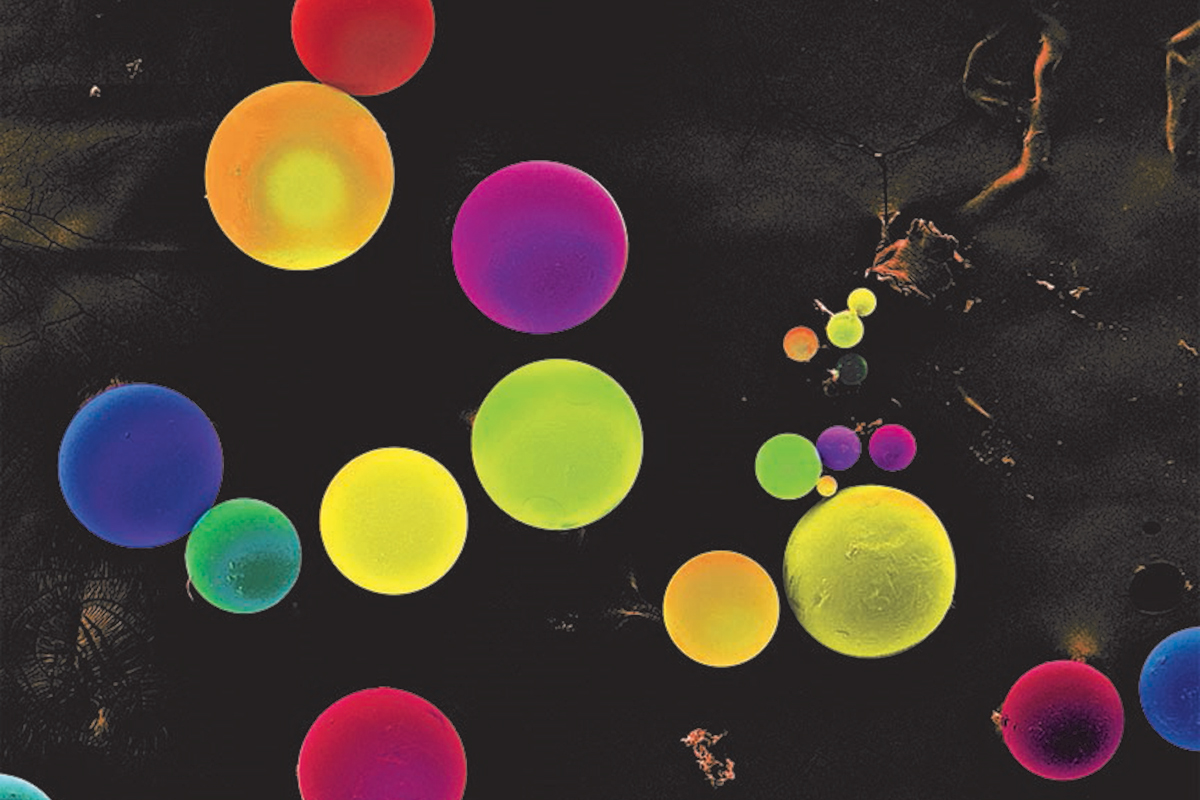An environmentally friendly alternative to plastic microbeads
A biodegradable polymer developed by MIT chemical engineers could find use in beauty products and cleansers—and could even help fortify foods with vitamins.

The tiny beads added to some cleansers and cosmetics are one source of the long-lasting microplastics that threaten the environment. But MIT researchers have found a way to address the problem at its source: replacing them with polymers that break down into harmless sugars and amino acids. Particles of this polymer could also be used to encapsulate nutrients such as vitamin A to fortify foods, which could help some of the 2 billion people around the world who suffer from nutrient deficiencies.
To develop the material, graduate student Linzixuan (Rhoda) Zhang and her colleagues turned to poly-beta-amino esters, a class of polymers previously developed in the lab of Institute Professor Robert Langer, ScD ’74, which have shown promise for medical applications.
By changing the composition of these materials’ building blocks, researchers can optimize properties such as hydrophobicity (ability to repel water), mechanical strength, and pH sensitivity. One property the team targeted, with an eye to using the polymer to add nutrients to food, was the ability to dissolve when exposed to acidic environments such as the stomach.
The researchers showed that they could use particles of the polymer to encapsulate vitamins A, D, E, and C, as well as zinc and iron. Many of these nutrients are susceptible to heat and light degradation, but the team found that the particles could protect them from boiling water for two hours. They also showed that even after being stored for six months at high temperature and high humidity, more than half of the encapsulated vitamins were undamaged.
To demonstrate the particles’ potential for fortifying food, the researchers incorporated them into bouillon cubes—a common ingredient in Africa, where nutrient deficiencies are common, says Ana Jaklenec, a principal investigator at the Koch Institute for Integrative Cancer Research and a senior author, with Langer, of a paper on the work.
In this study, the researchers also tested the particles’ safety by exposing them to cultured human intestinal cells. At the amounts that would be used in food, the particles were not found to damage the cells.
To explore the particles’ potential for use in cleansers, the researchers mixed them with soap foam. This mixture, they found, removed permanent marker and waterproof eyeliner much more effectively than soap alone. Soap mixed with the new microparticles was also more effective than a cleanser that includes polyethylene microbeads, and the particles did a better job of absorbing potentially toxic elements such as heavy metals.
The researchers plan to run a small human trial later this year and are gathering data that could be used to apply for GRAS (generally recognized as safe) classification from the US Food and Drug Administration. They are also planning a clinical trial of foods fortified with the particles.
Their work on the polymer, they hope, could help significantly reduce the amount of microplastic released into the environment from health and beauty products. “One way to mitigate the microplastics problem is to figure out how to clean up existing pollution,” Jaklenec says. “But it’s equally important to look ahead and focus on creating materials that won’t generate microplastics in the first place.”
Keep Reading
Most Popular
Ethically sourced “spare” human bodies could revolutionize medicine
Human “bodyoids” could reduce animal testing, improve drug development, and alleviate organ shortages.
Everyone in AI is talking about Manus. We put it to the test.
The new general AI agent from China had some system crashes and server overload—but it’s highly intuitive and shows real promise for the future of AI helpers.
Anthropic can now track the bizarre inner workings of a large language model
What the firm found challenges some basic assumptions about how this technology really works.
An ancient man’s remains were hacked apart and kept in a garage
Why archaeologists are increasingly leaving historic sites untouched until we have less destructive technologies for studying them.
Stay connected
Get the latest updates from
MIT Technology Review
Discover special offers, top stories, upcoming events, and more.